How To Spot a Fake Omega Wristwatch
by Paul Altieri
Omega, which was founded in 1848, is one of the world’s oldest, most highly respected, and popular watch manufacturers, so it should come as no surprise that the brand is frequently the target of counterfeiters.
Knock-off reproductions vary in quality and detail with some so close in design to the original watch that the case back must be removed and the movement examined in order to verify the watch’s authenticity.
If you are considering purchasing an Omega, here is some advice to help spot a possible counterfeit.
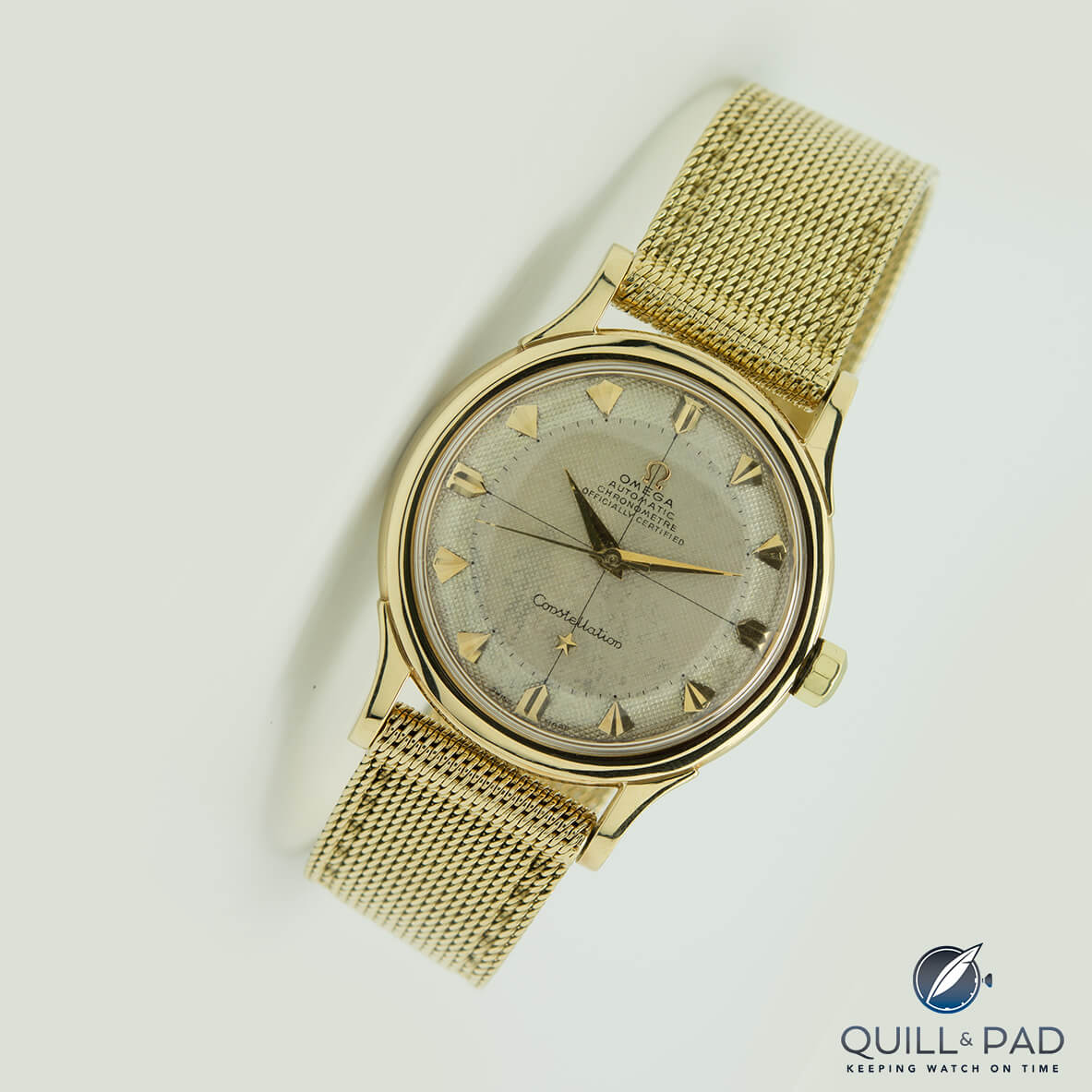
Omega Constellation Reference 2652SC (photo courtesy Robert-Jan Broer/Fratello)
————————————————————————————————-
————————————————————————————————-
Multiple design elements in one
Combining multiple design elements into one is the biggest red flag to look for when identifying a fake watch.
Many counterfeits draw design elements from different Omega lines, resulting in a watch that has the features of two or more distinct Omega models. If the watch superficially appears to be a Speedmaster, but says Seamaster on the dial and has the case back of a Constellation, then the watch is probably a fake.
One major exception to this rule is constituted by some vintage examples of Omega’s De Ville model.
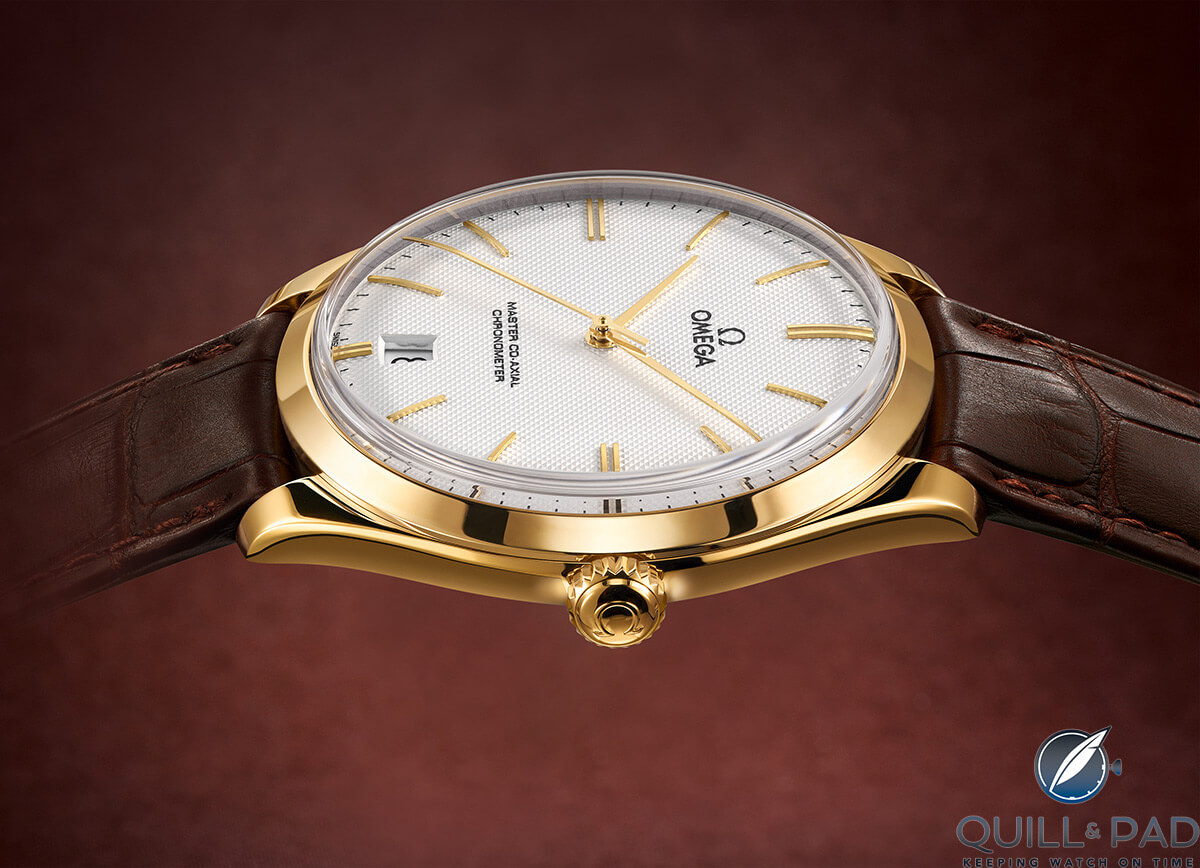
The Omega De Ville Tresor from 2014: a pure, modern De Ville design
Prior to becoming its own, unique model in Omega’s lineup, the De Ville was released as a variant in the Seamaster model range. As a result, some of the earlier versions have both names printed on the dial.
Check for misspellings and poorly executed printing/engraving
Given that Omega makes some of the finest timepieces in the world, you can rest assured that the firm does not produce watches with misspellings on the dial, case, or movement.
Additionally, any printing on the dial or engravings on the case/case back should be near perfect in execution on an authentic Omega.
If the lines are messy or crooked, then you are likely dealing with a fake watch.
————————————————————————————————-
————————————————————————————————-
Check the functions of the watch
Many counterfeiters do not bother to take the time to fully replicate all of the functions of the original watch.
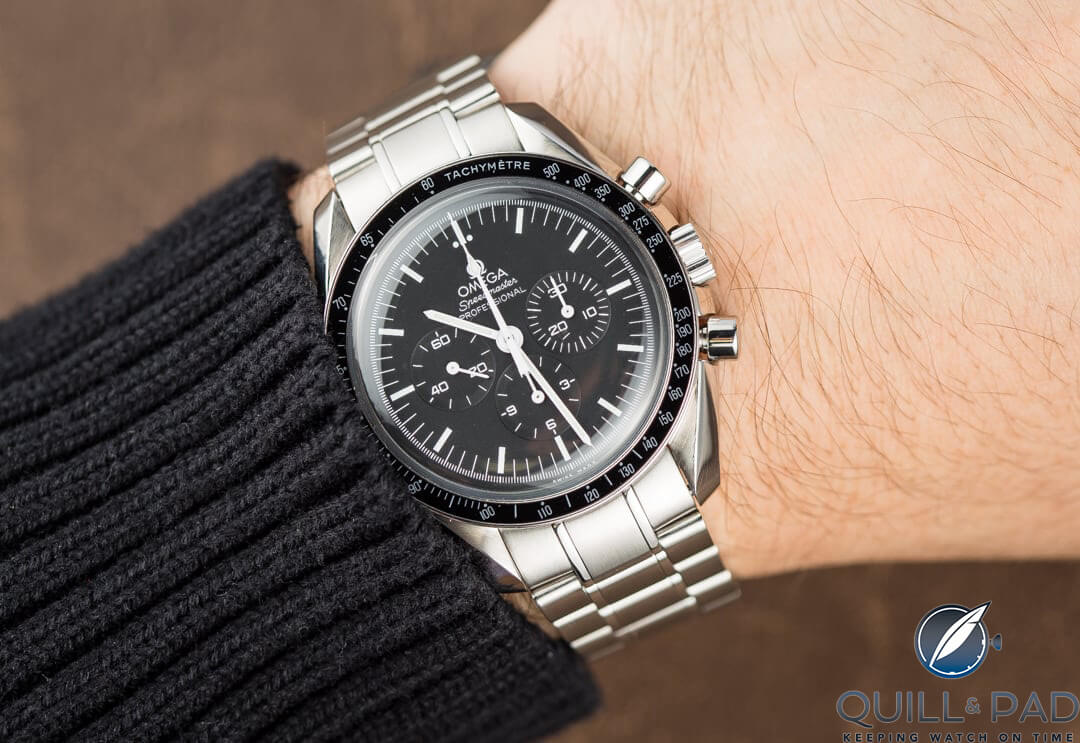
A pre-owned Omega Speedmaster on the wrist (photo courtesy Bob’s Watches)
Examples of this may include a Speedmaster with non-functioning subdials or helium gas escape valves that are misplaced or do not unscrew.
If an Omega without a date display or any other complication has multiple crown positions, then it is likely a sign that the movement inside was not originally intended for that watch.
Look for the serial number
Omega watches are engraved with a seven- or eight-digit serial number that is entirely unique to that specific watch.
Vintage watches frequently have the serial number engraved on the inside of the case back, while contemporary Omega models often have it engraved on the outside of the case (more often than not on the bottom of one of the lugs).
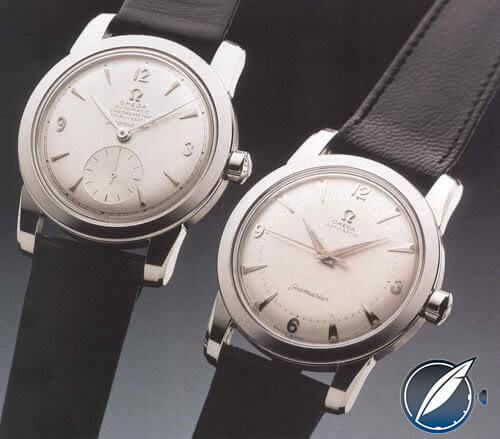
The original style of the Omega Seamaster; these particular examples are from 1948 and 1949
Even when a serial number is present, it is worth running the number through a quick Internet search. Many counterfeit Omega models use the same serial number for multiple watches, so if the serial number comes up for anything other than the exact watch that you are holding, then it is likely a fake.
————————————————————————————————-
————————————————————————————————-
Examine the movement
If uncertainty remains, open the watch and examine its movement or take it to a watchmaker and have him or her do this.
Omega engraves its movements, and the majority of its vintage models feature movements that are plated in copper. All Omega movements – new and old alike – are remarkably well finished and possess a certain level of refinement and detail that will not be found on counterfeit timepieces.
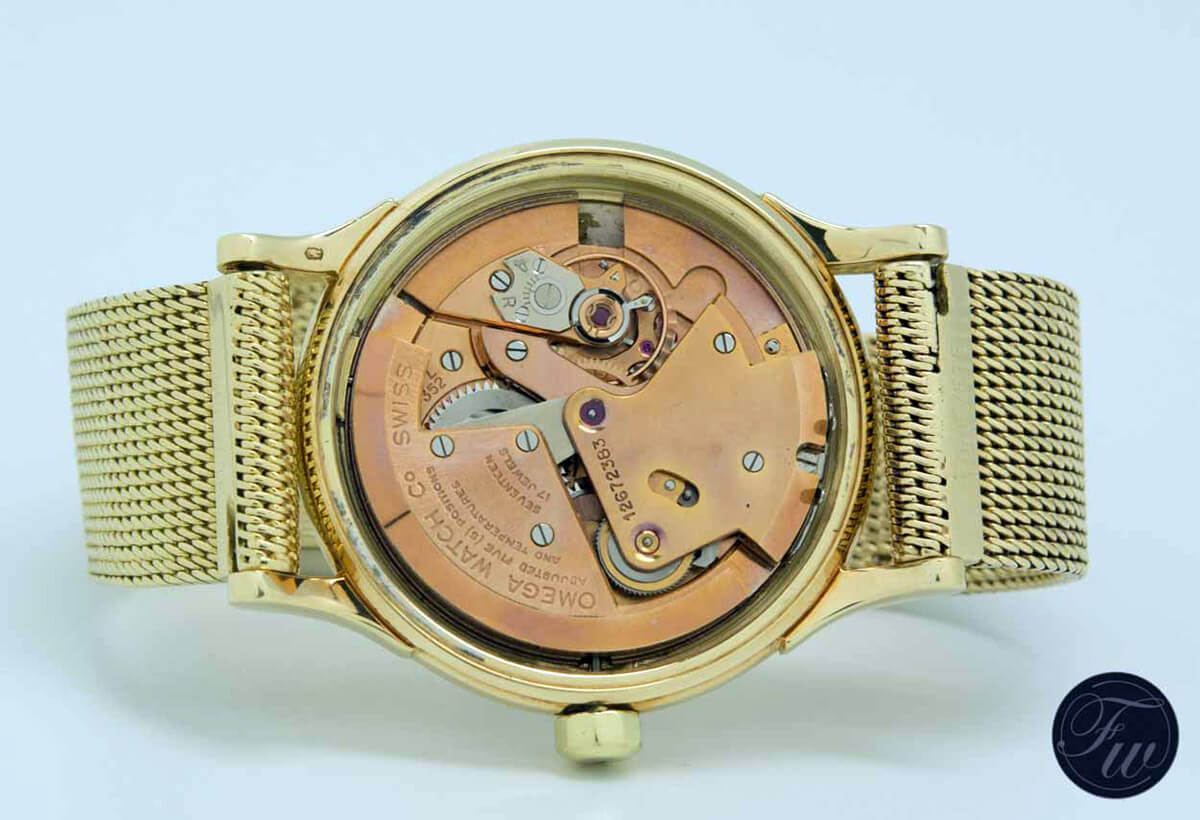
The movement of Omega Constellation Reference 2652SC from 1952: note the copper-colored plating (photo courtesy Robert-Jan Broer/Fratello)
While this checklist is a great way to help you spot many fake Omega watches, there will still be some counterfeits that are such faithful reproductions that you should have them examined by a professional before purchasing.
Anytime you purchase a watch, it is important to do your research. And, as always, you must trust the seller.
Paul Altieri is the founder and CEO of the popular pre-owned watch site Bob’s Watches.
* This article was first published on October 29, 2016 at How To Spot A Fake Omega Wristwatch.
You may also enjoy:
6 Ways To Spot A Fake Watch, Even If You Don’t Know How To Spot A Fake Watch
Decoding Omega References: 14 Magic Digits And Codification Tables Revealed
Keep Calm And Continue Collecting: Advice For An Up And Down Watch Market
You Know You’re A Watch Guy Or Gal If . . .
Leave a Reply
Want to join the discussion?Feel free to contribute!

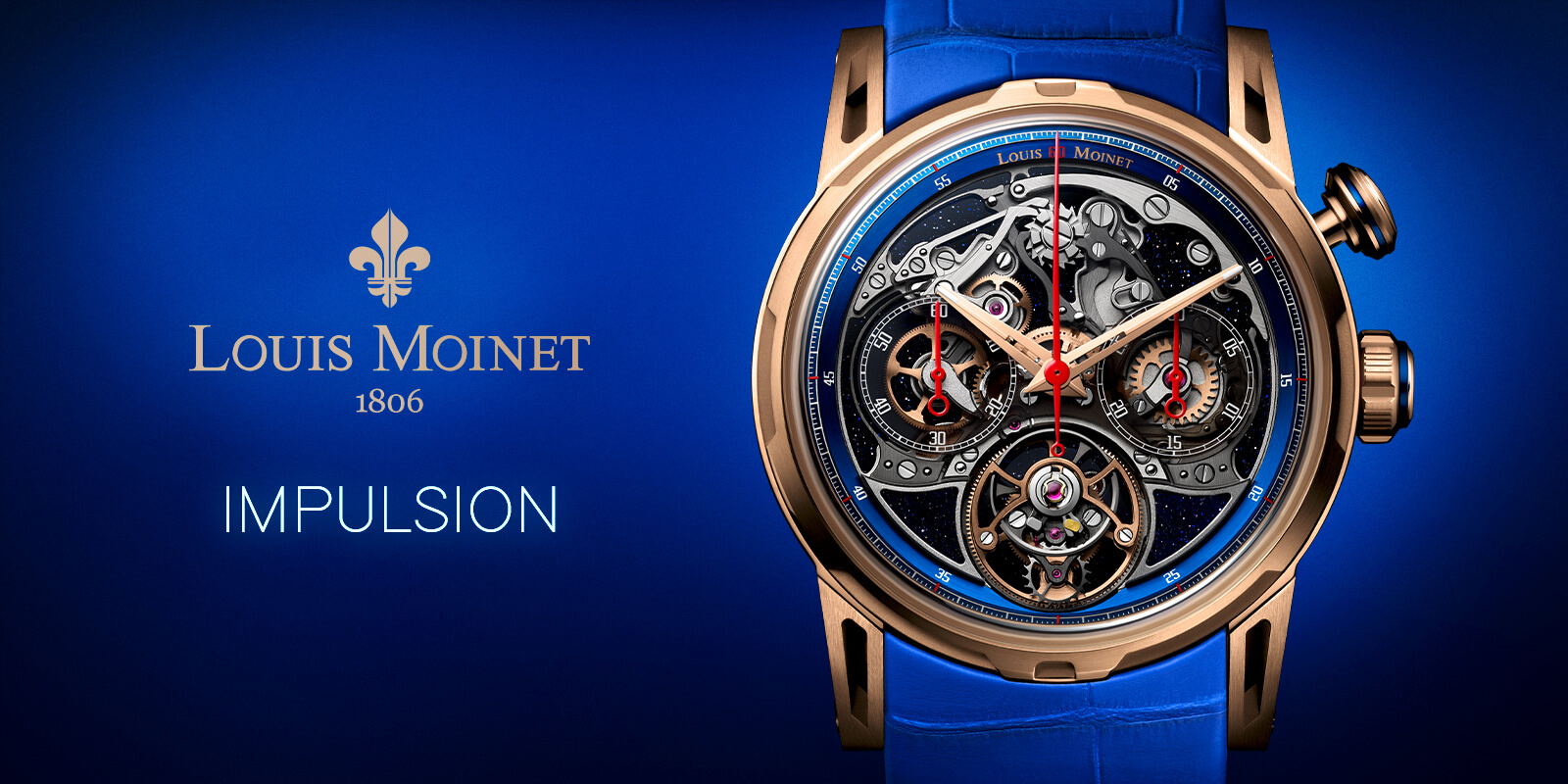
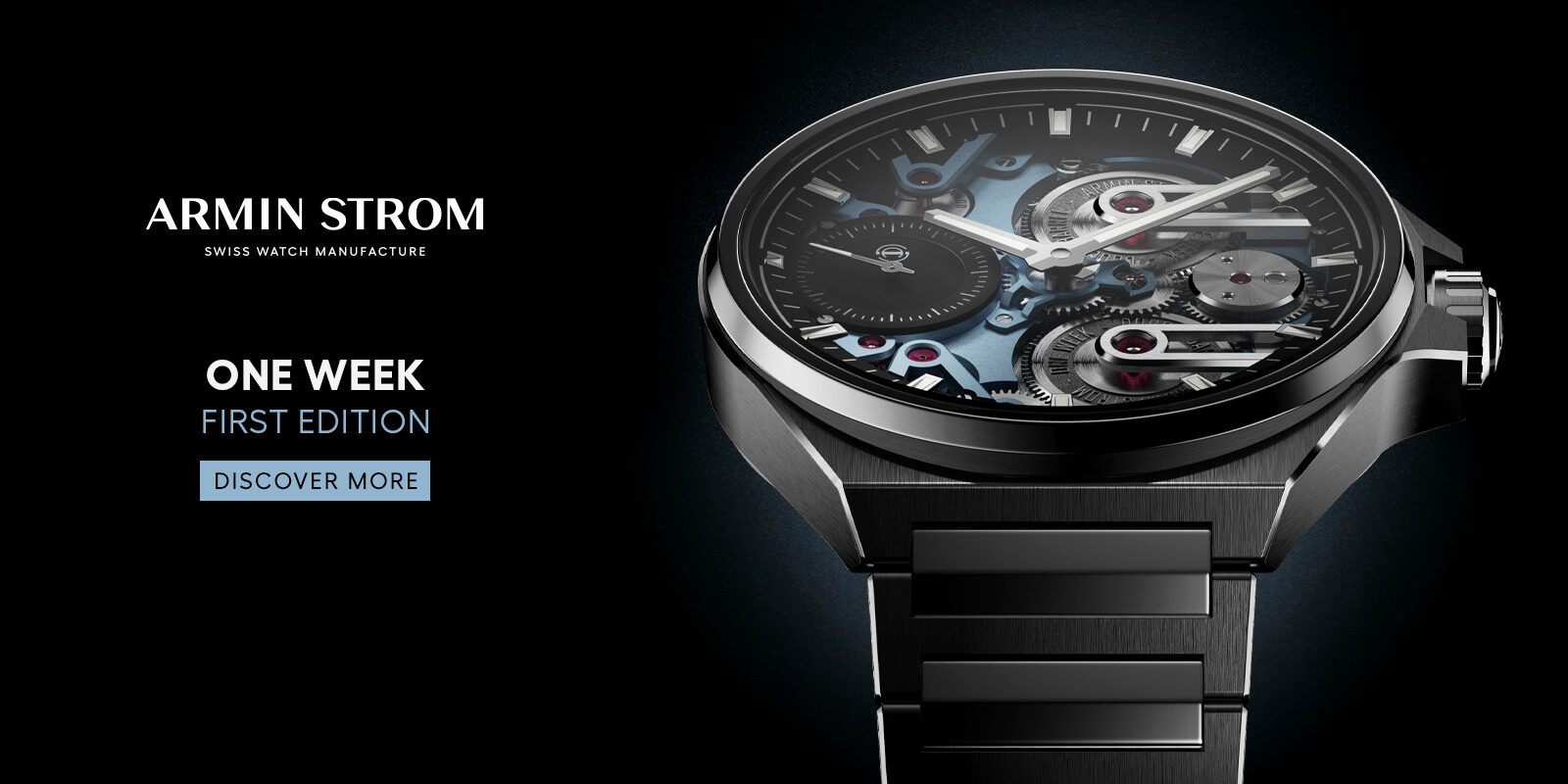
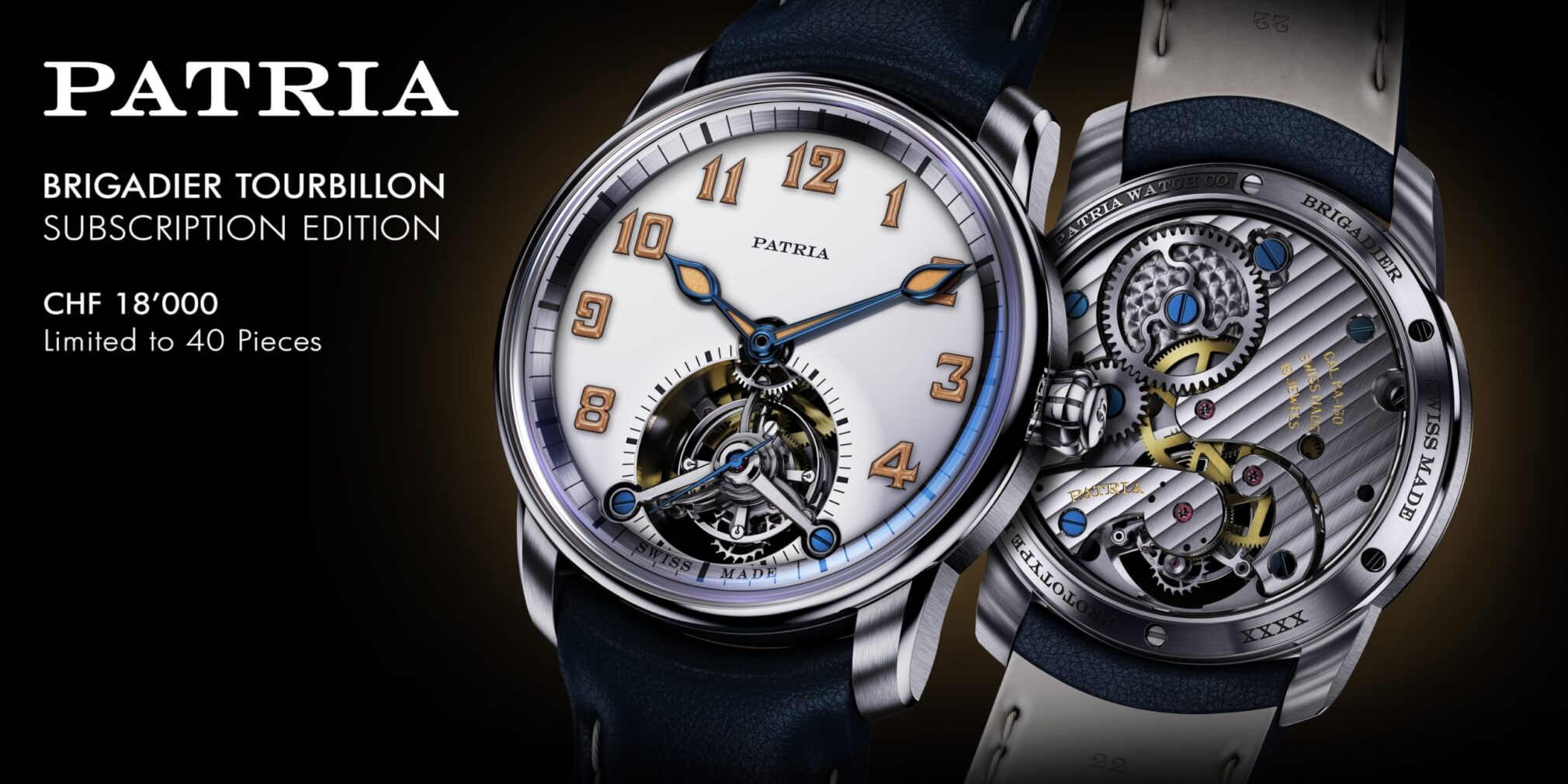


I own an Omega Sea Master Professional
Co- Axial Master Cronometer